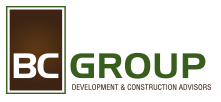Developments in Construction Related to Modular, Prefab and 3D Printing
The construction industry is one of the most dynamic and rapidly evolving industries today. This can be attributed to the use of new techniques, materials, and technologies that are constantly being developed. One such example of these developments includes prefabrication, modular construction methods, and 3D printing.
Prefabrication is a process in which components of a structure are manufactured off-site in a factory-like setting, then transported to the building site where they are assembled into the final structure. The advantage of prefabricated components is that it allows for more time-efficient assembly at the job site and often results in higher quality workmanship than traditional methods since all components are produced under controlled conditions. Additionally, with prefabrication, materials can be ordered from suppliers in bulk quantities at lower costs which enables cost savings over traditional methods.
Modular construction involves taking standard units or “modules” that have been constructed off-site and assembling them on-site according to predetermined plans. This type of construction is typically used when there is limited space on the job site or when a certain degree of customization is desired given specific client requirements but still keeping within budget constraints. Modular construction is also advantageous as it reduces disruption at the worksite (since manufacturing takes place offsite) leading to faster completion times as well as improved safety due to less site traffic and fewer workers present onsite at any one time.
3D printing has also emerged as a popular technology that has been adopted by many companies in the construction industry. 3D printing is an additive manufacturing technique whereby objects are created using layer upon layer of material until complete, eliminating many costly fabrication steps associated with traditional manufacturing processes. 3D printing offers several advantages including increased efficiency due to shorter production times and improved design flexibility due to its ability to produce highly customized products with complex geometries not previously available through conventional processes such as casting or milling.
BC Group’s goal is to stay familiar with these advancements within the construction industry through their continued commitment to innovation and technological advancement while keeping an eye on staying within the budgets set by their clients. By understanding trending construction advancements, they are able to offers educated opinions and recommend using one or more while simultaneously reviewing cost reduction compared to traditional methods.
